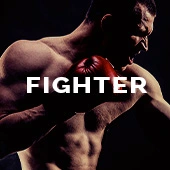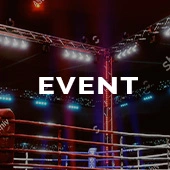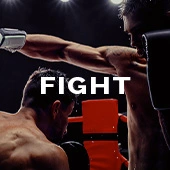Remember when DAZN’s stated goal was to kill pay-per-view?
Well, the streaming network may have done it. Just not in the way it intended.
After this weekend, boxing fans will think long and hard about spending money to watch the next “loaded” fight card.
Then again, if you’re looking for a silver lining to the frustration that accompanied staying home and ordering Friday’s and Saturday’s action on PPV, there’s this: The at-home experience was decidedly more palatable than trying to be a part of it in person.
The back-to-back Riyadh Season cards distributed on DAZN Pay-Per-View – Friday from Times Square in New York City and Saturday from Saudi Arabia – ultimately proved a master class in how not to build boxing’s fan base.
The two events had it all: dreadfully dull fights, lack of atmosphere due to lack of accessibility for true fans, and a substantial cost for those slogging through it on TV.
Often in boxing, there’s an unpredictability to which fights will fall flat. The sport’s history is littered with matchups that seemed going in like the right fight at the right time, but the styles didn’t quite mesh or the talent gap proved a little too wide, and fans were left booing. (In fact, we’re just a few days removed from the 10th anniversary of one of the all-time examples.)
This wasn’t that. This wasn’t a case of matchmakers doing their level best and just getting a little unlucky.
If you were paying attention, it was obvious that the great majority of this weekend’s fights were weak on paper. As I wrote last Thursday:
“Most of these bouts are designed to set up bigger fights down the road. The betting odds at the top of each card this weekend are staggeringly lopsided.
“There are nine 12-rounders across this weekend’s three major cards yet not a whole lot in the way of great matchups, or even good matchups, among them.”
Mea culpa No. 1: There were actually only eight 12-rounders, as it turned out the Efe Ajagba-Martin Bakole heavyweight bout was scheduled for 10.
Mea culpa No. 2: The two Sunday night fights on ESPN, which were not on PPV and were not connected with the Saudi promotion but were among the nine fights previewed and ranked, proved varying degrees of good and great.
Otherwise, no lies detected.
Going in, the weekend schedule reeked of quantity over quality.
Nevertheless, it was reasonable to expect at least a fight or two on the Riyadh Season “Fatal Fury” cards to pan out and produce some thrills.
Instead, in seven fights across the two cards, we heard the scorecards at the end of all seven, were treated to zero knockouts, and, in fact, witnessed just a single knockdown across 82 rounds.
And those aren’t the most depressing numbers to examine. Not even close.
You can’t spell “CompuBox” without a “P-U” in the middle, and good lord were these punch stats historically dreadful. (It was either the “P-U” line or a “Coma-puBox” joke – still not sure if I made the right choice.)
Saturday’s main event, in which William Scull spent 12 rounds on the move and Saul “Canelo” Alvarez spent 12 rounds wishing Scull would stop moving, set a record for the fewest combined punches thrown in a 12-rounder since CompuBox was founded in 1985. Scull threw 293, Canelo 152, adding up to 445 total.
And in terms of landed punches, each boxer scored in single digits in every single round of the fight until, finally, Alvarez found a home for exactly 10 punches in the 12th frame. They were credited with one landed punch between them in the opening round, setting the tone. Scull never landed more than six in any round. Canelo never got above seven until that final round.
And galling as those stats are, they had company this weekend. This is hard to believe, but in the 40 years CompuBox has been tracking fights, of the bottom five all-time for punches thrown in a 12-round fight, three of them happened this weekend.
Alvarez-Scull led the way with 445, but on Friday night in New York City, Rolly Romero and Ryan Garcia combined for 490 punches – the fourth-lowest total in CompuBox history – just moments after Devin Haney and Jose Ramirez finished combining for 499, the fifth-lowest output ever.
Let me repeat, and pardon my use once again of caps lock, but it’s needed here: CompuBox has tracked thousands and thousands of scheduled 12-rounders over the last 40 years, and THREE OF THE FIVE MOST PATHETIC DISPLAYS OF PASSIVITY EVER HAPPENED IN A SPAN OF ABOUT 29 HOURS THIS WEEKEND.
There was not a single fight among the seven featured bouts on the two cards that exceeded expectations or delivered anything resembling consistent action.
Some were less dreary than others, of course. Teofimo Lopez put on a sharp boxing display against Arnold Barboza Jnr, by far the most watchable bout of Friday’s trio. Badou Jack vs. Noel Mikaelyan was, as anticipated, close and competitive throughout and more or less held the viewer’s attention.
The Jaime Munguia-Bruno Surace rematch was somewhat tactically compelling. And Ajagba-Bakole had its moments and produced the drama that comes with a minor upset – at least until the judges spoiled that upset drama and handed Bakole an undeserved draw.
But Romero-Garcia was an utter bore aside from the left hook knockdown Romero authored in Round 2. Haney-Ramirez was worse than that because, well, imagine Romero-Garcia without the momentary excitement of a knockdown. And Alvarez-Scull made Romero-Garcia and Haney-Ramirez look like Tony Zale-Rocky Graziano and George Foreman-Ron Lyle.
Nobody was happy about any of it – except maybe mainstream sports yakker Pat McAfee, who was paid god-knows-how-much out of the Saudi coffers to grab a microphone at the end of Friday’s festivities and reveal to the world that he understands nothing about boxing as he gushed about how thrilling the fights were. (Someone send this guy a link to Diego Corrales-Jose Luis Castillo; he’ll spontaneously combust.)
It was the ex-boxers, though, who seemed most unhappy of all.
Tim Bradley let loose with an impassioned rant highlighted by his declaration that, “These fighters are all spoiled.”
Oscar De La Hoya – who, let’s acknowledge, has an agenda as a promoter – accused the star boxers of “fighting for the money and not legacy.”
They both hit on a key point. Much has been made of the way Turki Alalshikh and the General Entertainment Authority of Saudi Arabia have spent the last few years throwing money around, with no concern over short-term profits, but rather with the grander goals of (a) altering their country’s global reputation, and (b) gaining something close to monopolistic control of boxing.
But a bottomless spigot of cash brings with it downsides if the money is not spent wisely. Just like the weekend fight schedule, quantity without quality doesn’t get the job done.
And in this case, on what would henceforth be known as boxing’s Stinko de Mayo weekend if not for Naoya Inoue and Ramon Cardenas bailing the sport out on Sunday night, we saw that when fighters are overpaid there’s a chance they’ll underperform. (But, hey, if Dana White succeeds in turning boxing into UFC, they won’t be overpaid for long.)
Garcia, clearly behind in his fight against Romero, displayed no passion down the stretch because … well, he’s rich and famous and will continue to attract money and attention even with another loss on his record. He felt no desperation, so he fought with no desperation. (He also presumably fought without any banned substances in his system, a detail that could arguably be pertinent.)
Then there’s Bakole, who weighed in at 299 pounds, a solid 20 pounds above his ideal fighting weight, and the effects of that were obvious the entire fight. Ajagba had the right game plan: box, move, land just enough to keep Bakole honest, and weather Bakole’s offensive spurts with the knowledge that he’s too out of shape to chain such spurts together. The extra weight made Bakole slow and helped Ajagba to execute – and the extra weight was surely there because gigantic paydays have sapped Bakole’s desire to train his hardest.
Lots of other boxers this weekend showed their own forms of softness. Ramirez is just about spent and seems to know it, and Haney seemed to know it too and did just enough to protect (what he thought was) his rematch with Garcia.
Munguia knew how badly he needed a win and didn’t concern himself with gaining revenge by knockout.
And Canelo was content to throw 12.67 punches per round, while merely signing for this fight was all the crowning achievement Scull needed. I can hardly believe I’m saying this, but boxing would have been better served with a Cinco de Mayo weekend fight between Canelo and Jake Paul.
And then there were the settings and the logistics. Plenty has been said and written about past fights in Riyadh and the sterile environment that comes from setting up a ring in front of disinterested oil barons rather than a passionate, ticket-buying public.
Times Square was an entirely new experience. Let’s start with some points for ambition. The organizers tried something different, something inventive, something attention-getting.
The execution, however? Disastrous.
As Thomas Hauser detailed in The Guardian, the plan called for nearly 1,000 people at ringside, some 10,000-20,000 with a view of the ring, and the action streaming live on the massive Times Square video screens.
If only they had cleared any of this with city officials or police.
As fight night neared, the ring was relocated to an area with room for only about 300 people (they could have fit more if not for the decision to clear space for Michael Jackson’s former drummer’s drum kit), the video screens were kiboshed, and a fence with a wrap was put up to obstruct the view of the ring.
And as BoxingScene’s Ryan Songalia reported, amateur boxers from local gyms were invited, “only [to] be granted access to soundless screens several blocks away, penned in areas without seats, to act as extras for when the TV feed wanted to show crowd shots.”
Media members hoping to cover the fights were dispersed to area bars and restaurants, where the PPV feeds were reportedly spotty.
Oh, and some in the media finally received their rejection letters in response to their applications for credentials – shortly after the fights started.
It turns out they were the lucky ones. The true victims were those trapped inside the ringside area, their view of the outside world blocked by city-ordinance-required draping. Especially if they were among those loaded onto planes for the extended suffering of a trip to Riyadh for Alvarez-Scull.
After the pay-per-views, DAZN sent emails to customers who’d shelled out for one show or the other or ordered the combo platter. On Saturday morning, folks received one asking, “Did you enjoy Garcia vs. Romero?” My Sunday morning inbox featured the question, “Eric, did you enjoy Canelo vs. Scull?”
Read the room, DAZN.
This is not to say there were no positives to the PPV experience.
Jim Lampley returned Friday from a six-year hiatus and seemed not to have lost a syllabic step. Romero-Garcia was legit thrilling for about half a round. Mike Tyson produced a few moments of welcomed unintentional comedy. And having Times Square celebrity impersonators carry the round cards was a clever and charming twist. (Fake Ed Sheeran really had us going at my PPV gathering. And I’ll take fake Hulk Hogan over the real guy any day.)
But that’s about where the positive takeaways end.
And the most important thing is always the quality of the fights. Oh, the irony of these cards getting the “Fatal Fury” branding because they were sponsored by the action-oriented combat games of that name, only for actual action and combat to turn out to be so pitifully hard to find.
And to make matters worse, it’s not just a case of, “That sucked, but let’s move on.” There’s some downstream effect to this drudgery.
Garcia-Haney II may have been derailed, and if it goes ahead, it has at least been greatly devalued from all directions. (Romero, meanwhile, was the least enthused major upset winner I can ever remember seeing, and he proceeded to champion Garcia-Haney II afterward, almost as if he was worried he was in trouble for ruining the rematch.)
And if Canelo-Scull was meant to prime the pump for Canelo vs. Terence Crawford, it failed mightily.
Alvarez-Crawford on September 12 at Allegiant Stadium in Las Vegas will still do massive business, assuredly. But Crawford is no longer the hipster upset pick just for the savvy viewers who understand that weight advantages are often overrated. “Bud” is now the trendy choice for hardcores and casuals alike. And a win over Canelo would now get an asterisk, because Alvarez’s struggles against Scull sparked widespread speculation that the Mexican great’s tequila bottle is all emptied out, save for the worm.
A promotional company can bring all the cash to the table that it wants. If that cash is allocated properly – as it has been for plenty of events in the Riyadh Season era, making fights like Oleksandr Usyk-Tyson Fury and Dmitry Bivol-Artur Beterbiev happen – it can absolutely grow the sport and deliver satisfaction for the fans.
But when that cash is used to shut down a section of New York City without an agreed-upon plan, to transport fancy belts in fancy protective cases, to overpay for tune-ups and mismatches, to put on fights the public can’t get into, and to charge $90 for viewing access to it all on top of the $225 people are already paying for their annual subscription – well, that doesn’t build up the sport.
Tim Bradley and Oscar De La Hoya spoke for a lot of angry ex-fighters this weekend.
This weekend assuredly created its share of angry ex-fans as well.
Eric Raskin is a veteran boxing journalist with more than 25 years of experience covering the sport for such outlets as BoxingScene, ESPN, Grantland, Playboy, and The Ring (where he served as managing editor for seven years). He also co-hosted The HBO Boxing Podcast, Showtime Boxing with Raskin & Mulvaney, The Interim Champion Boxing Podcast with Raskin & Mulvaney, and Ring Theory. He has won three first-place writing awards from the BWAA, for his work with The Ring, Grantland, and HBO. Outside boxing, he is the senior editor of CasinoReports and the author of 2014’s The Moneymaker Effect. He can be reached on X, BlueSky, or LinkedIn, or via email at RaskinBoxing@yahoo.com.




